
The blue banded bee, or genus Amegilla, is a solitary bee that is indigenous to Australia and South (and South East) Asia. It's a common species in India that is often mistaken for a fly; a fast flier, it can hover in place and flits about between flowers like a little bolt of blue lightning.
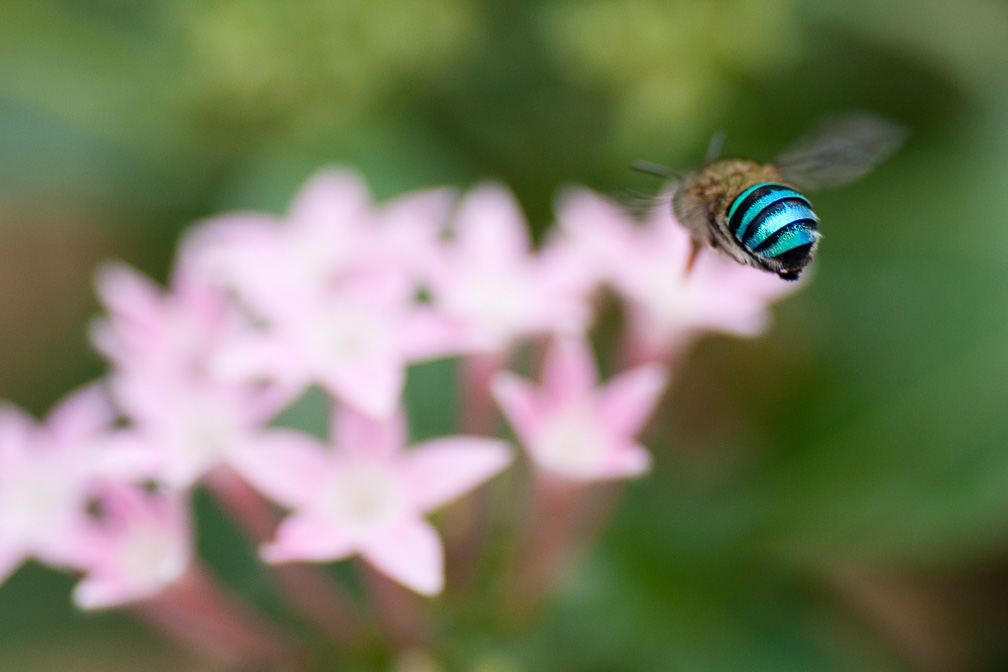
Despite the name, the bands aren't always blue. Often, they're grey.
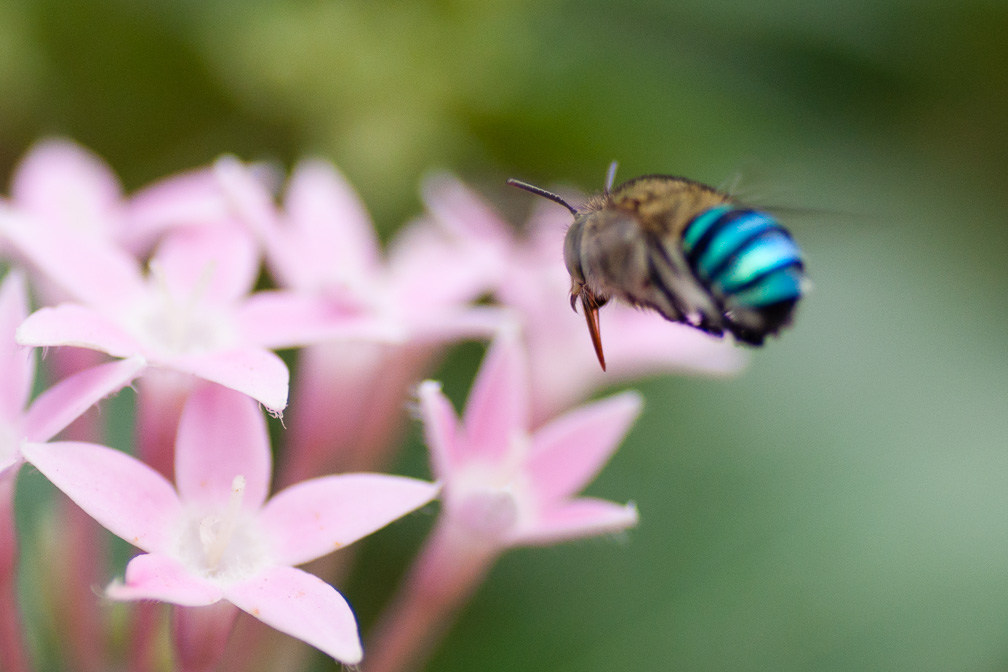
Proboscis Extension Reflex, or PER for short, is a reflex to antennal stimulation in bees. In other words, when bees "smell" nectar with their antennae, their tongues automatically extend. Blue banded bees hover around flowers with their tongues sticking out the whole time. It's quite Pavlovian.
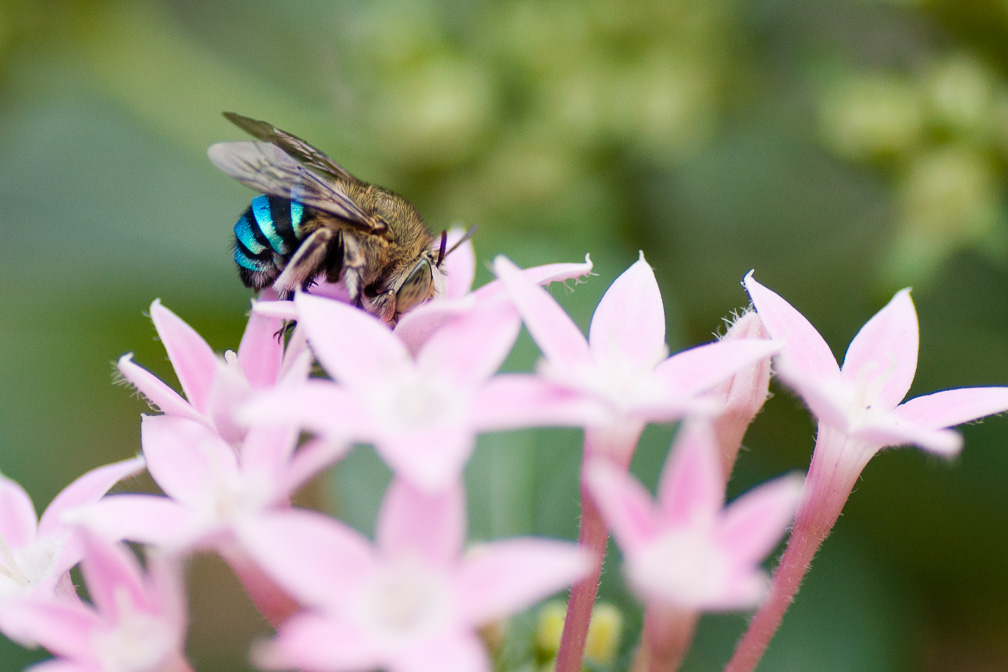
I don't know if it's just me, but bees remind me of dogs. It's probably their furriness. For insects, they're awfully cuddly-looking animals.

Interesting fact: one can easily tell the gender of Amegilla is by counting its bands: 4 blue bands means female, 5 means it's a male.
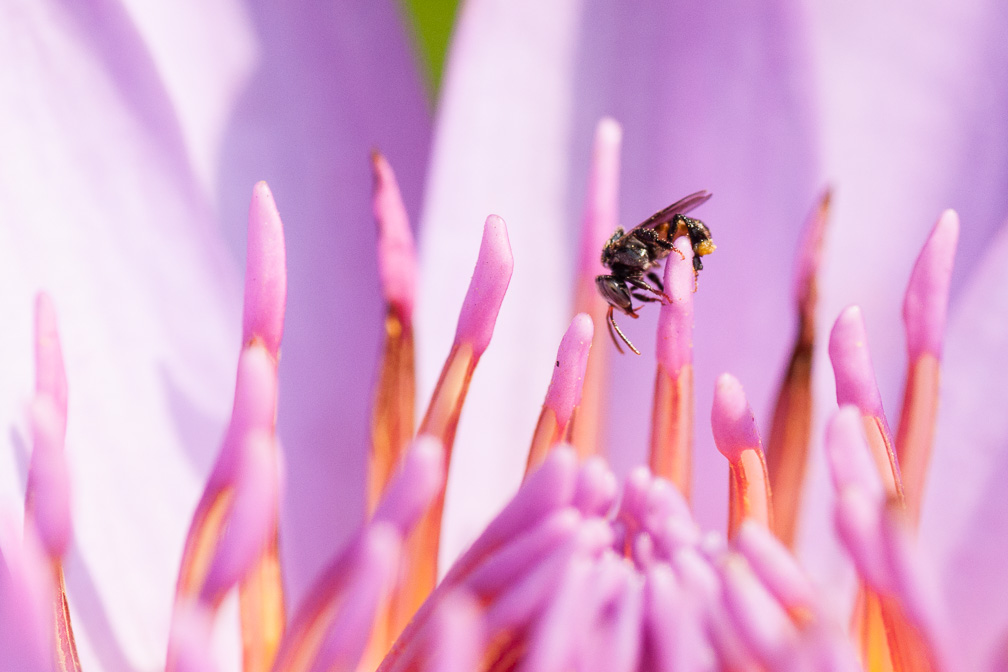
Stingless bees comprise several genera and species (around 500), and the name is a bit of a misnomer: many species have stings, but they're so tiny that they can't penetrate anything. Most are 4-5 millimetres long.
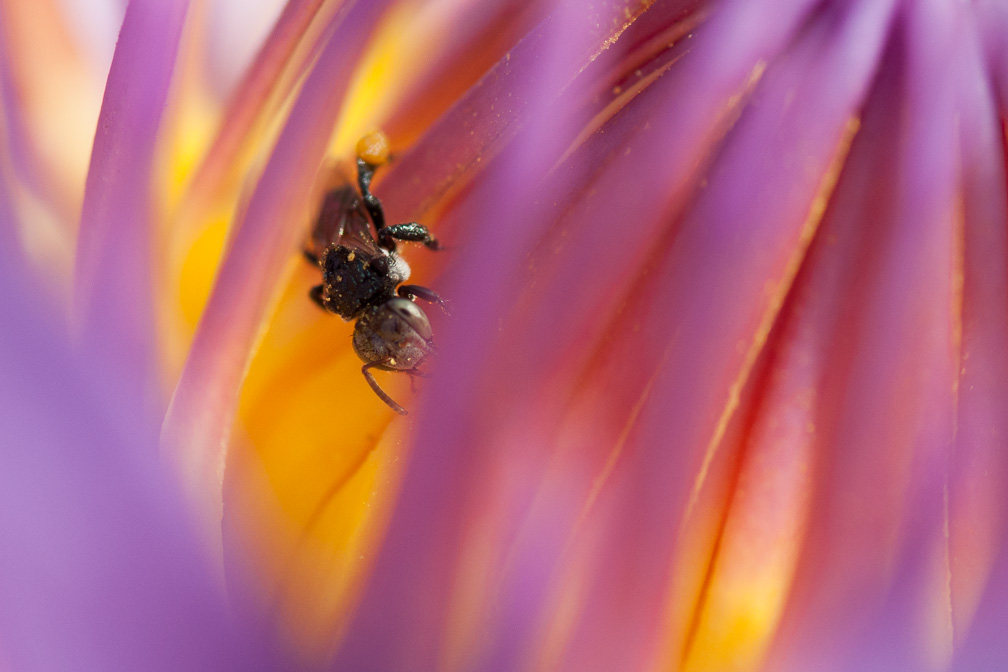
Stingless bees are abundant in India. Their diminutiveness means that they're often mistaken for wasps or flies. I've seen them on practically every nectar-bearing flower in Mumbai.
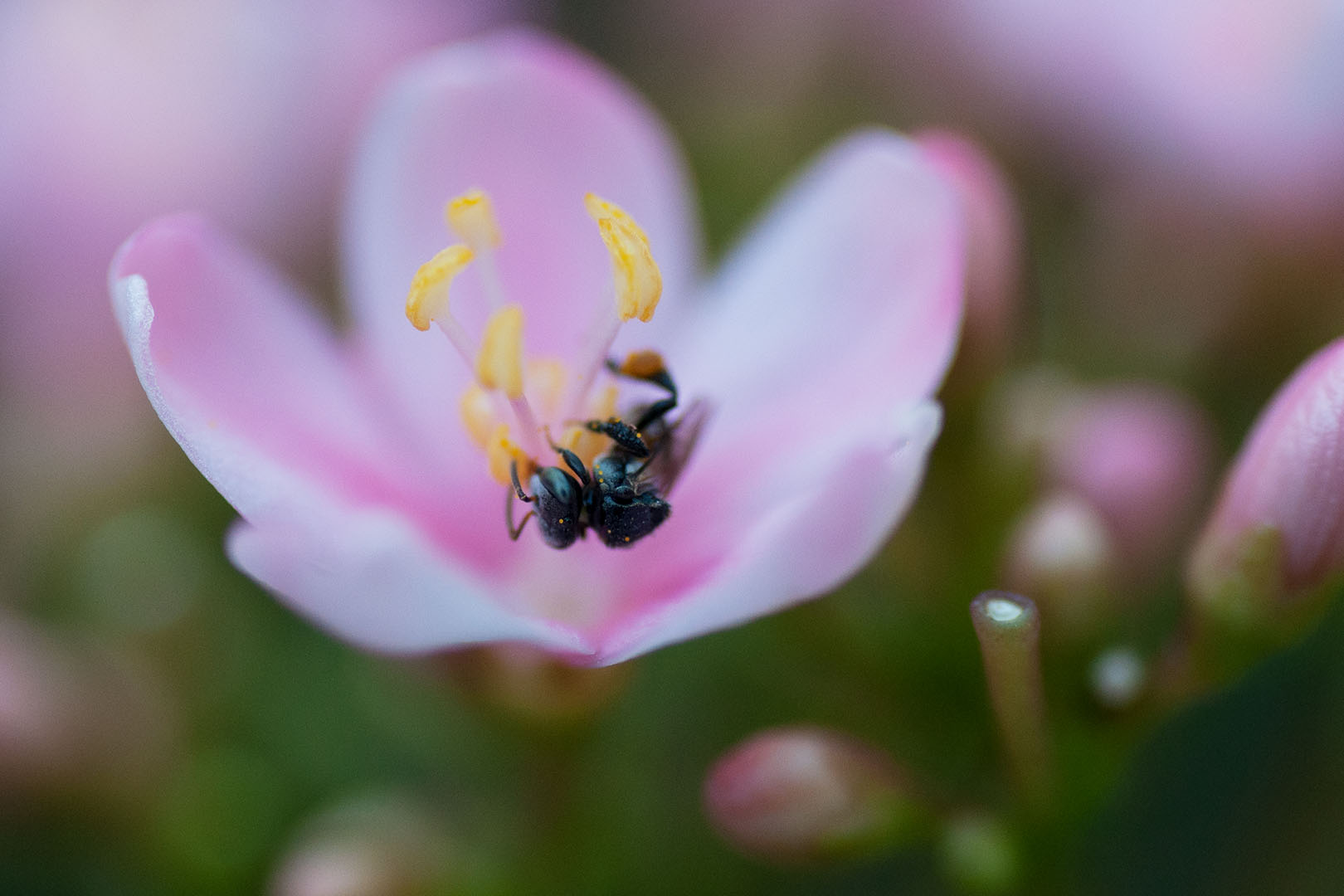
So far I seem to have noticed more of these pretty little critters on flowers that are pollen-rich.
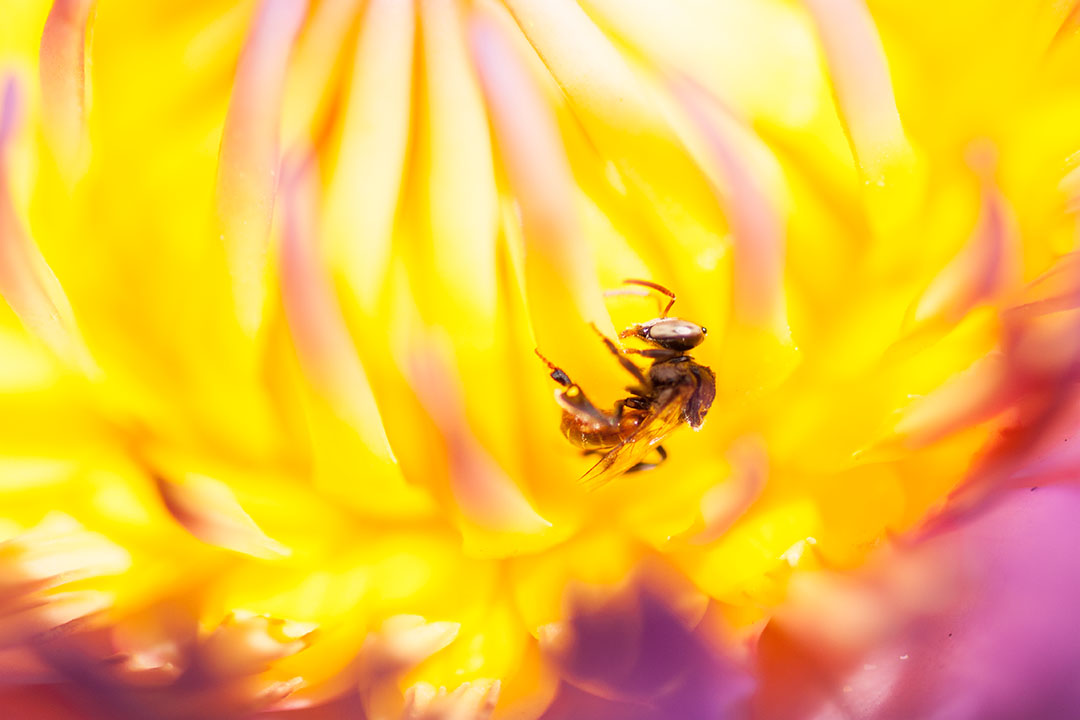
Stingless bees are often buzzing about tropical water lilies; their flowers are rich with pollen.

I couldn't stop thinking about Sarlacc after taking this series of shots. Pop culture aside, flowers such at the tropical water lily have co-evolved with bees. Flowers wouldn't exist without bees. The converse is also true.

Of all the Meliponines, genus Trigona (aka genus Tetragonula)is probably the most well-known. Meliponines are also tiny. Although there are a few species that are larger, most are about 4-5mm in length. They're hence a bit of a challenge to photograph, but their ubiquity makes the process a little easier.
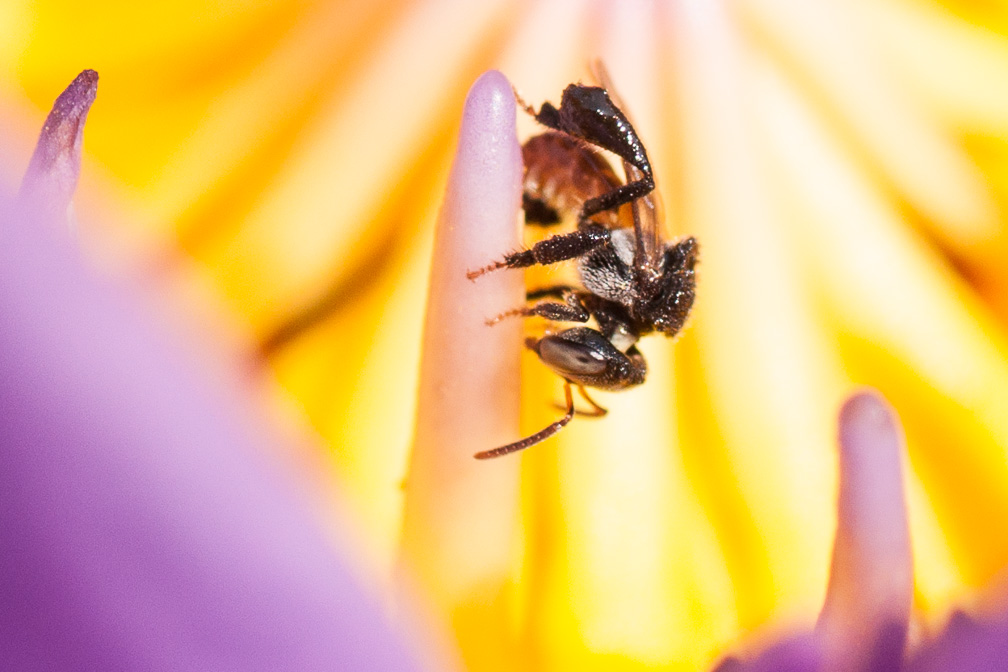
Stingless bee, close-up. Probably trigona iridipennis. Stingless bees are also commonly called "Dammer Bees" in India.

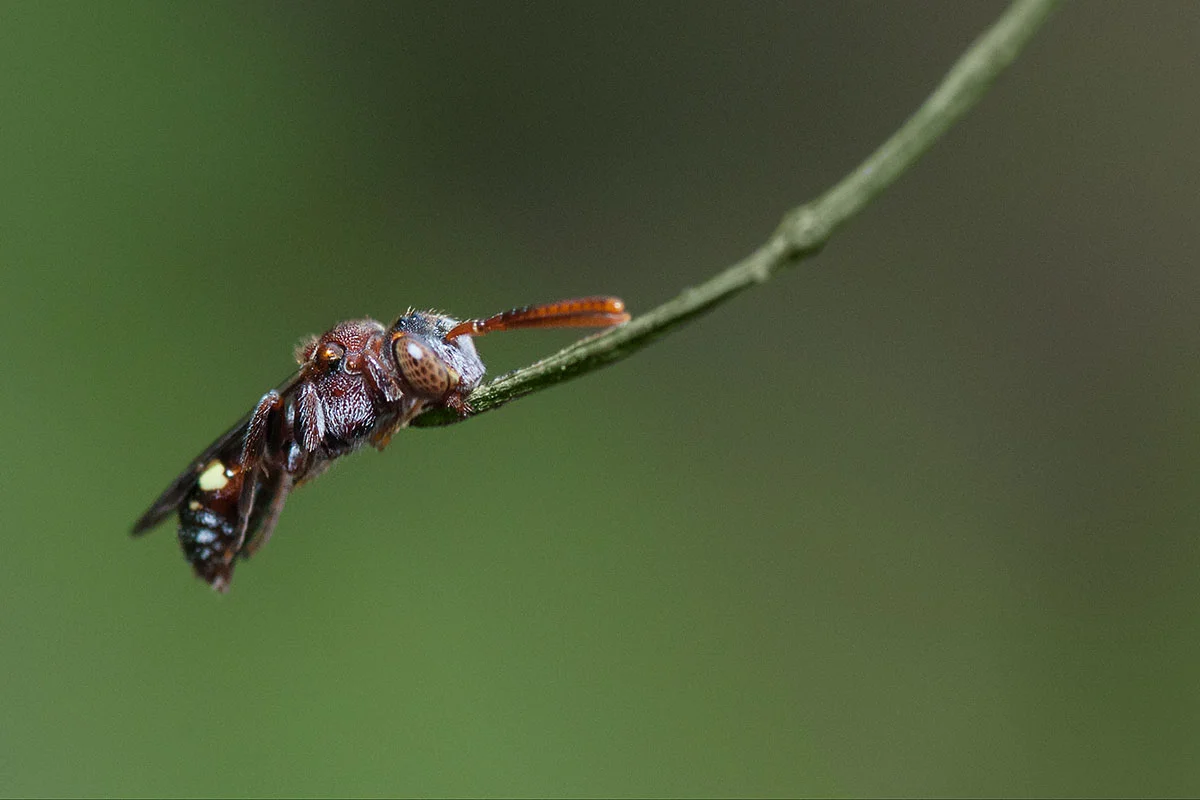
I have no idea what bee this is. I'm not even sure that it is a bee- it could very well be a wasp. All I can tell you is that most solitary bees "sleep" in this fashion; they latch on to a plant stem with their mandibles and settle down for the night, becoming unresponsive till the next morning.
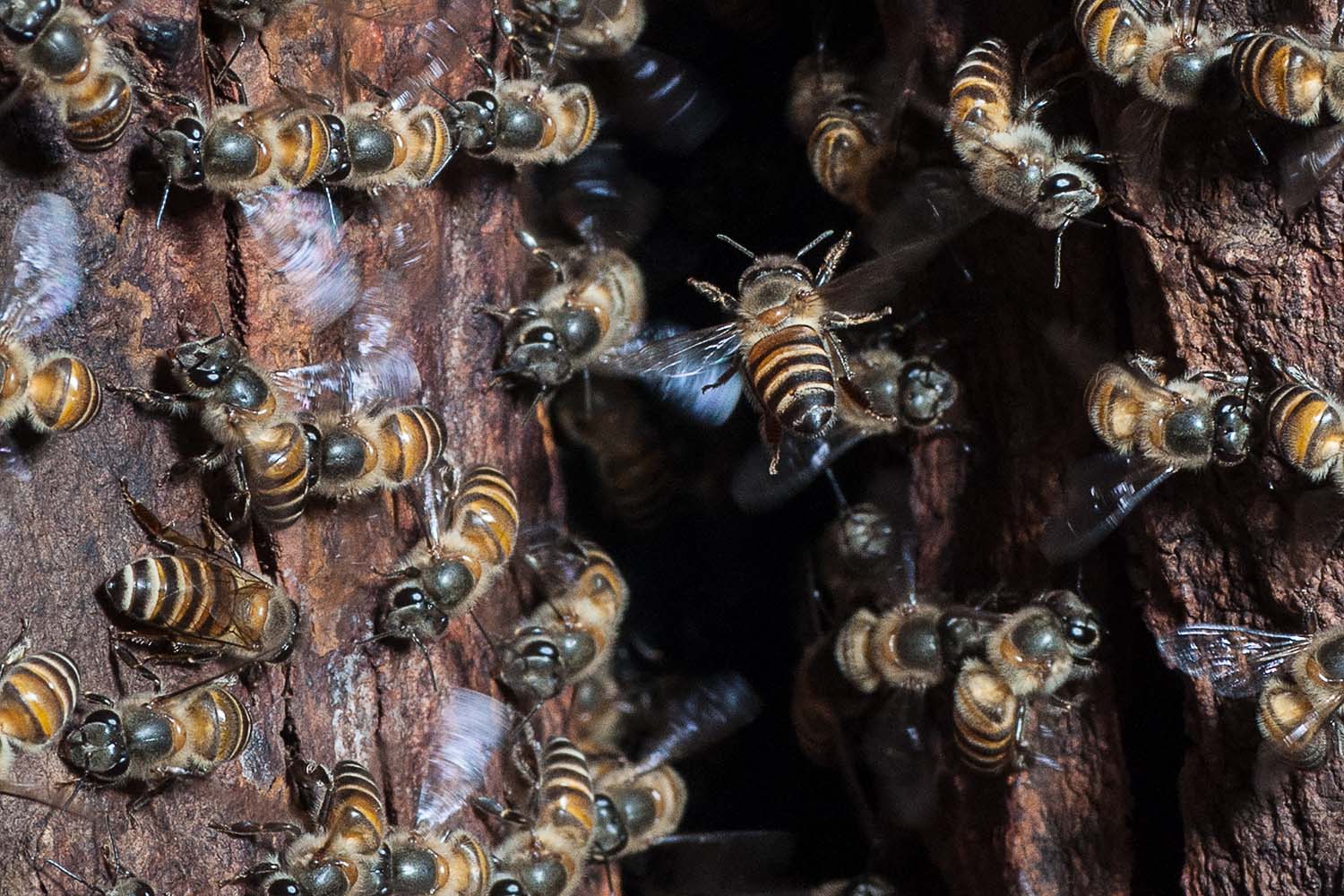
The Honey bee is of course what most people think of when the word "bee" is uttered. There are only 7 species worldwide, with 44 subspecies and several hybrids. While one might imagine overhanging honeycombs on tree limbs when thinking of hives, honey bees very often nest within tree trunks, like this hive of Apis cerana.

Bees are 'hairier' than most other insects because it allows them to carry pollen back to their hives, where it is fed to their grubs. Adult bees, on the other hand, only feed on nectar. Honey bees have a special "honey stomach", where nectar is stored, and then subsequently regurgitated along with their saliva. It is this mixture that forms honey.

The majority of bees within a hive are female. Male bees, called drones, do not forage or contribute to the hive. Their primary role is to mate with a queen bee (this happens in-fight), after which the male promptly drops dead. Drones within a hive are eventually ejected by worker bees during severe winters, since they don't collect pollen or nectar.
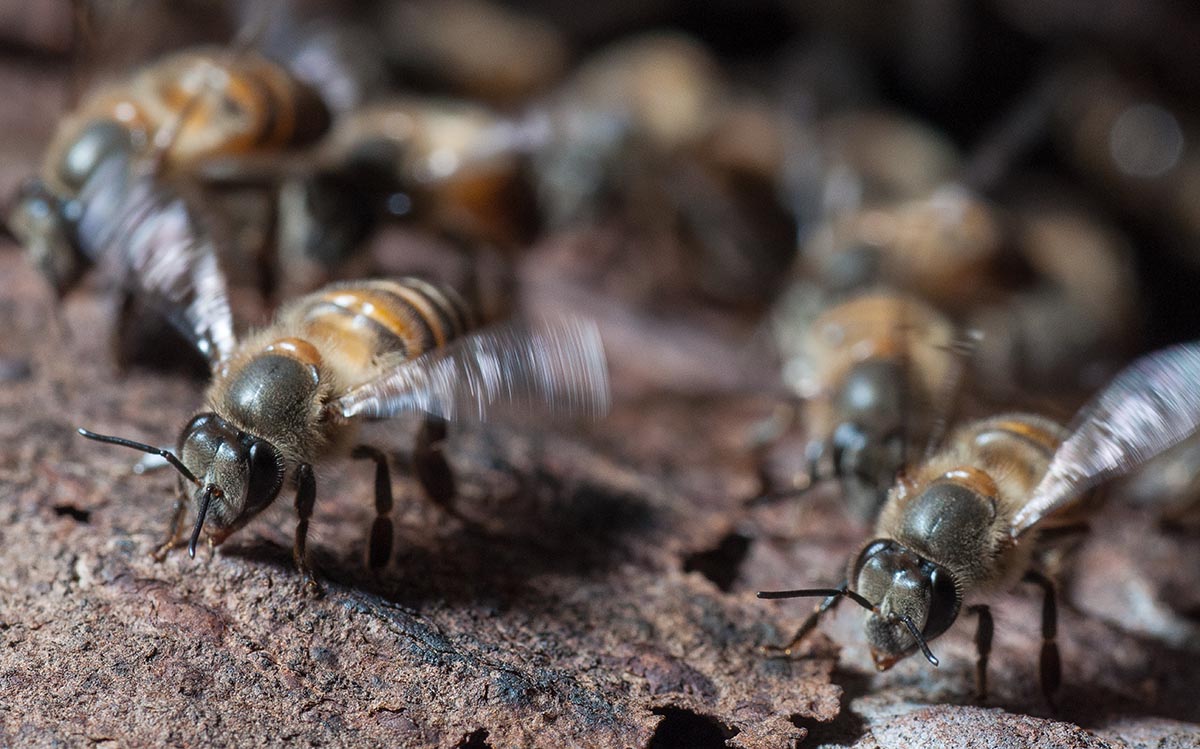
A honeybee hive is kept at a temperature between 32 and 35 degrees Celsius. If it starts getting hot, honey bees will fan cool air into it by rapidly fluttering their wings. When the hive gets too cold, 'heater bees can actually detach their flight muscles from their wings and buzz-heat the hive.
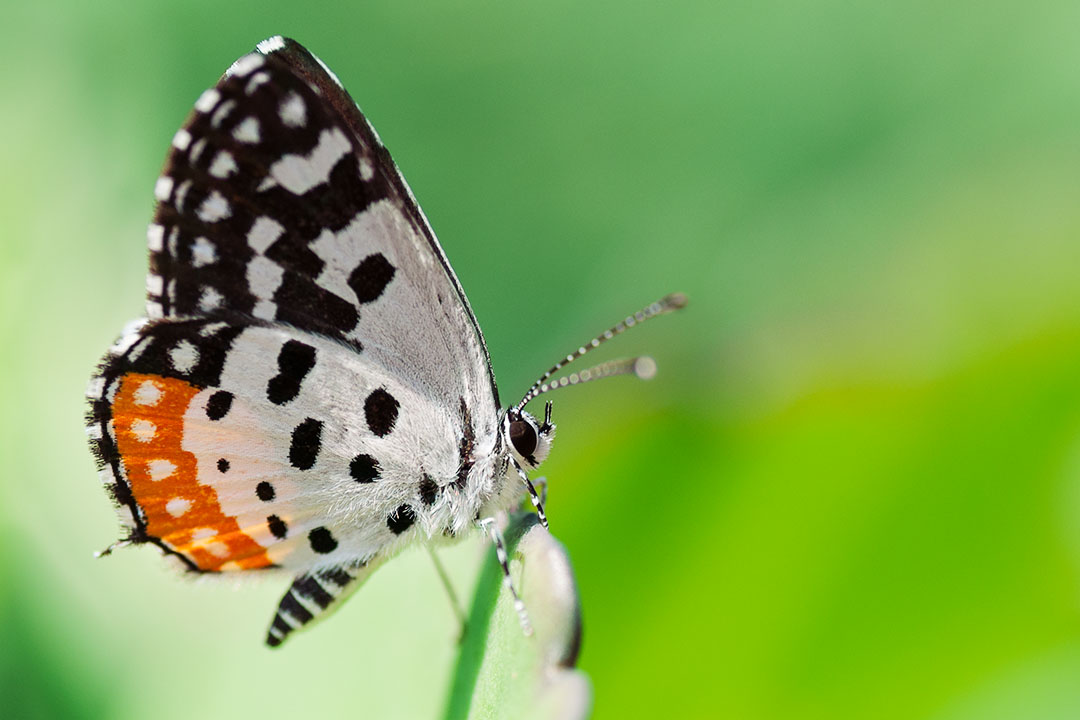
Other than bees, butterflies are also important pollinators. They're not quite as efficient at pollination as bees, though. Moreover, caterpillars can really chow down on leaves, damaging some plants in the process.
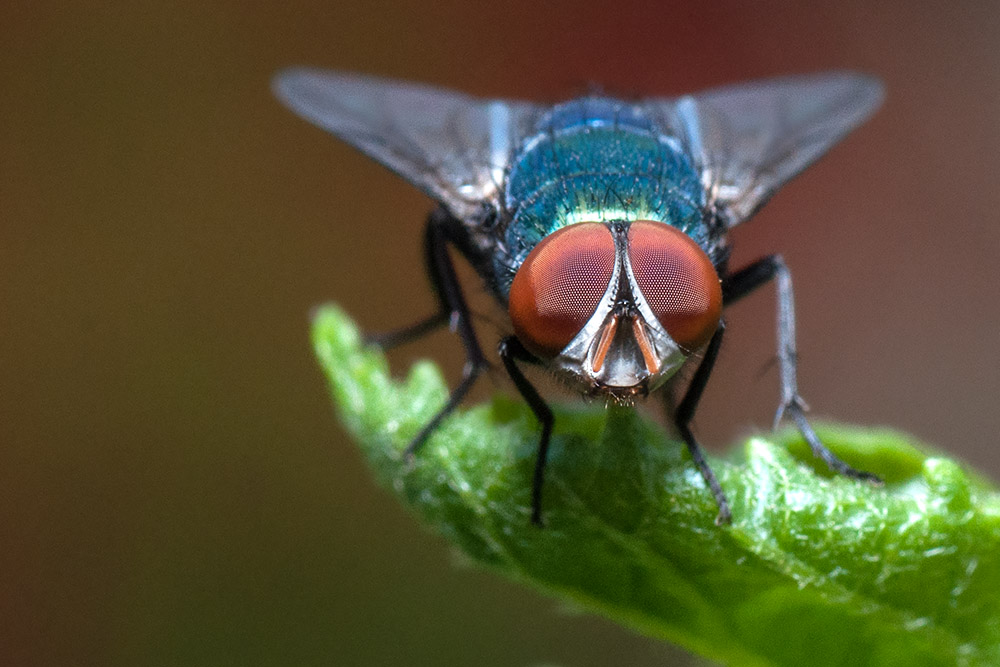
Flies are yet another example of pollinating insects. Again, they aren't as good as bees at pollination, but contribute to pollination nevertheless. Blue bottles are a common blow fly in Asia, genus Calliphora.

Animals of this size seem like little aliens when magnified.
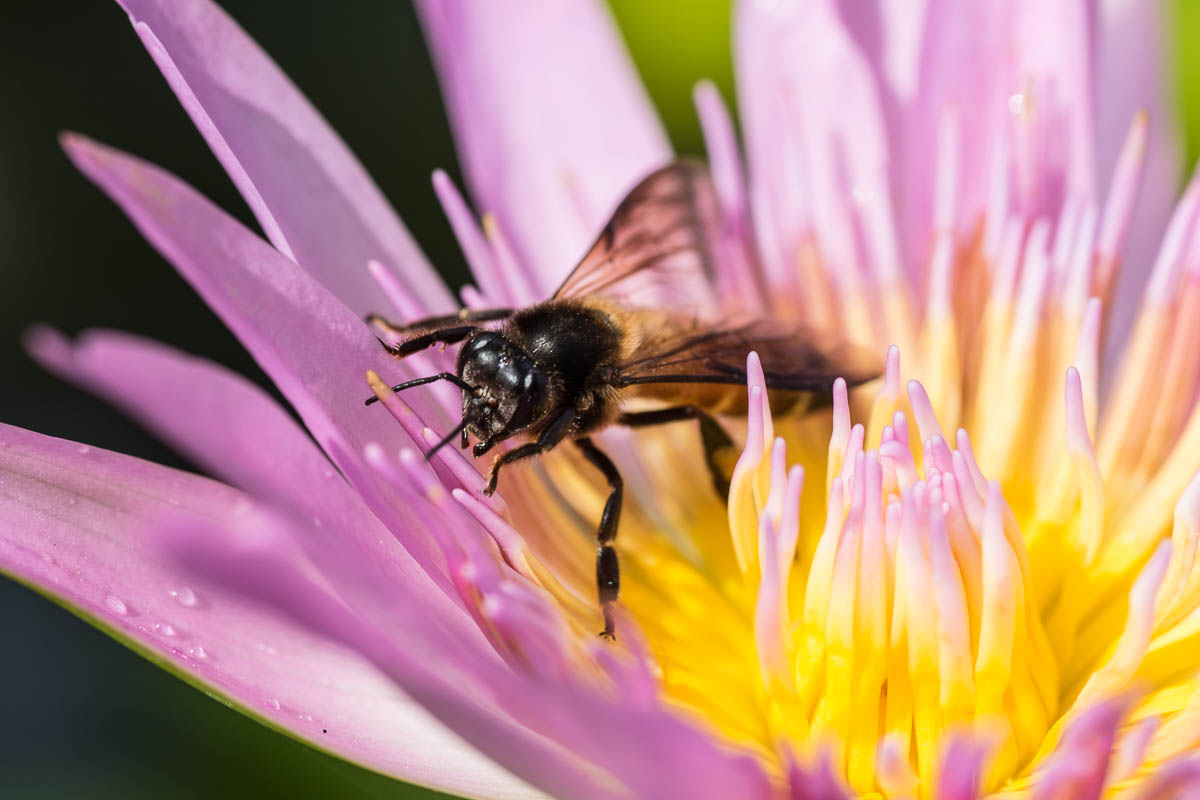
Apis dorsata is the largest species of honeybee. They're called 'rock bees' because they've been observed playing electric guitar.
Haha, just kidding. A. dorsata often create hives on rocky cliffs and outcrops, hence the name.
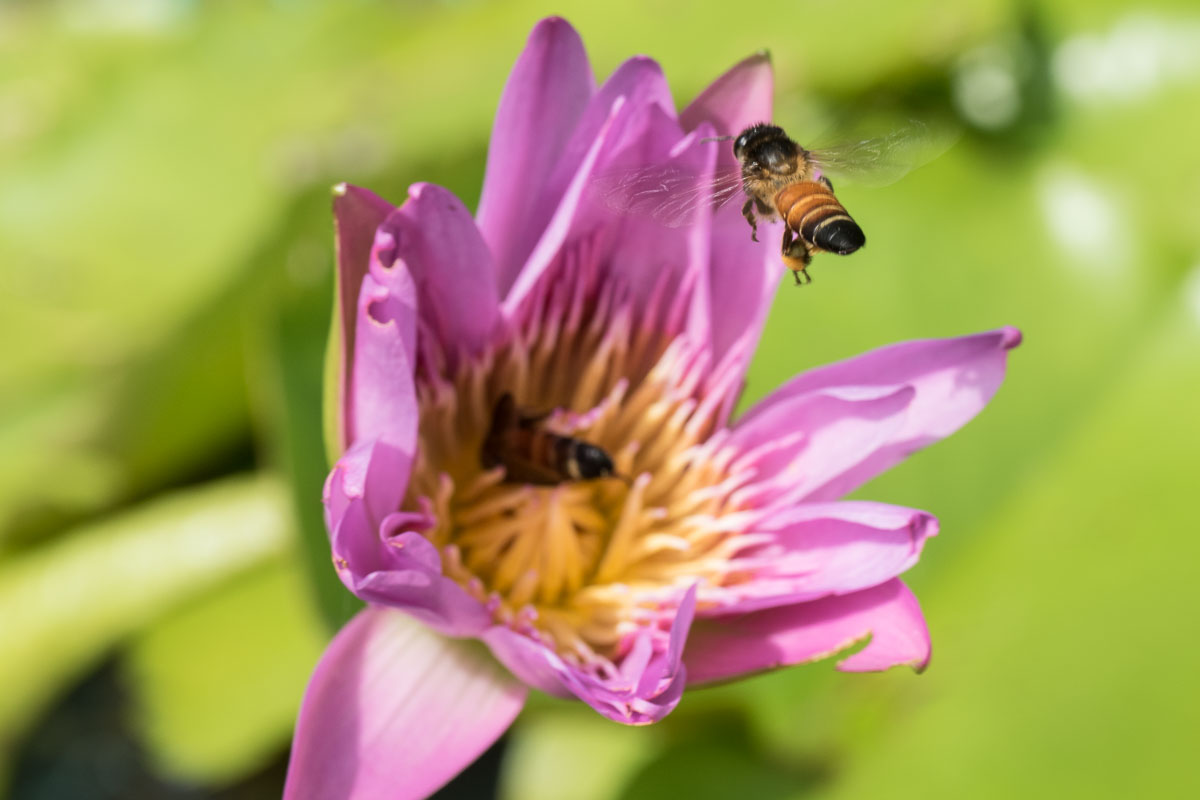
The giant honeybee's demeanour isn't exactly conducive to apiculture; they're reportedly more aggressive around their hives than their other honeybee cousins. Even so, people still risk life and limb for their honey in India, often scaling dangerous heights and rocky outcrops to do so.
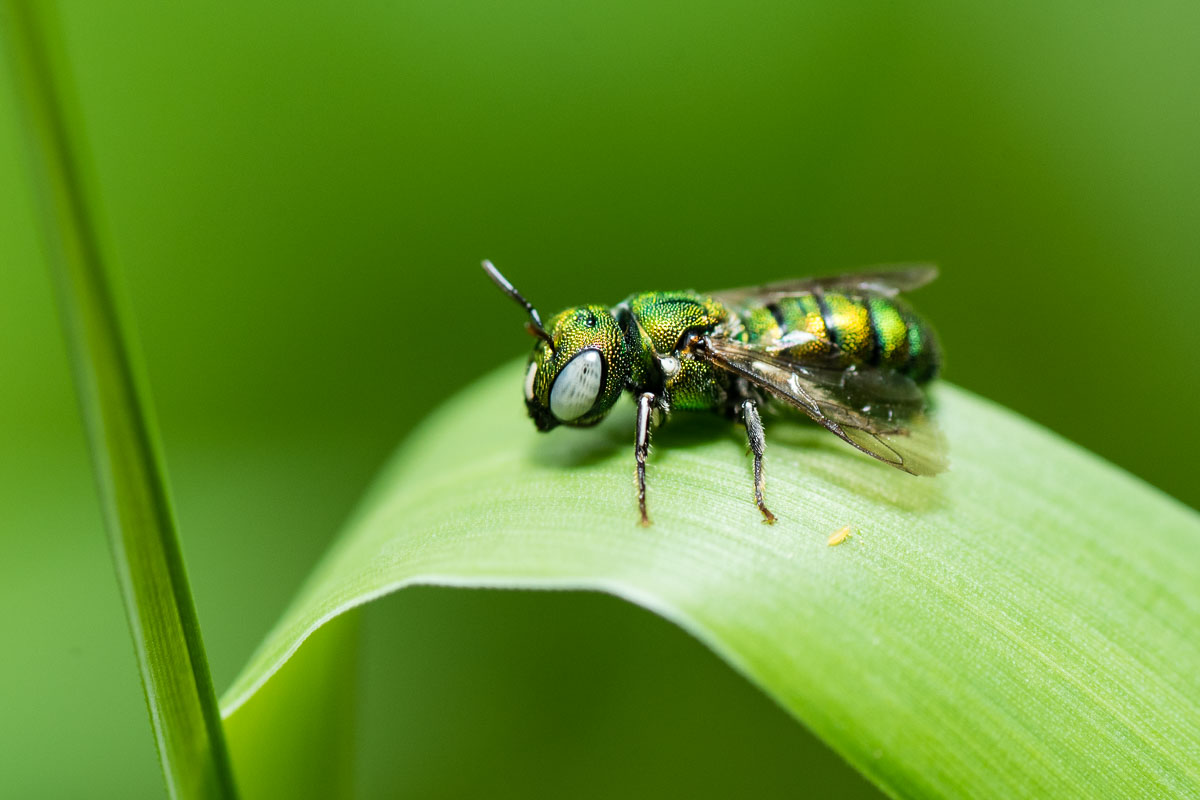
Genus ceratina is closely related to the more familiar (and bigger) carpenter bee species. There are more than 200 species within this genus. Some are dark, while others like this one are a brilliant iridescent green.

This particular species is abundant in Mahim Nature Park, Mumbai, which is where it was photographed.
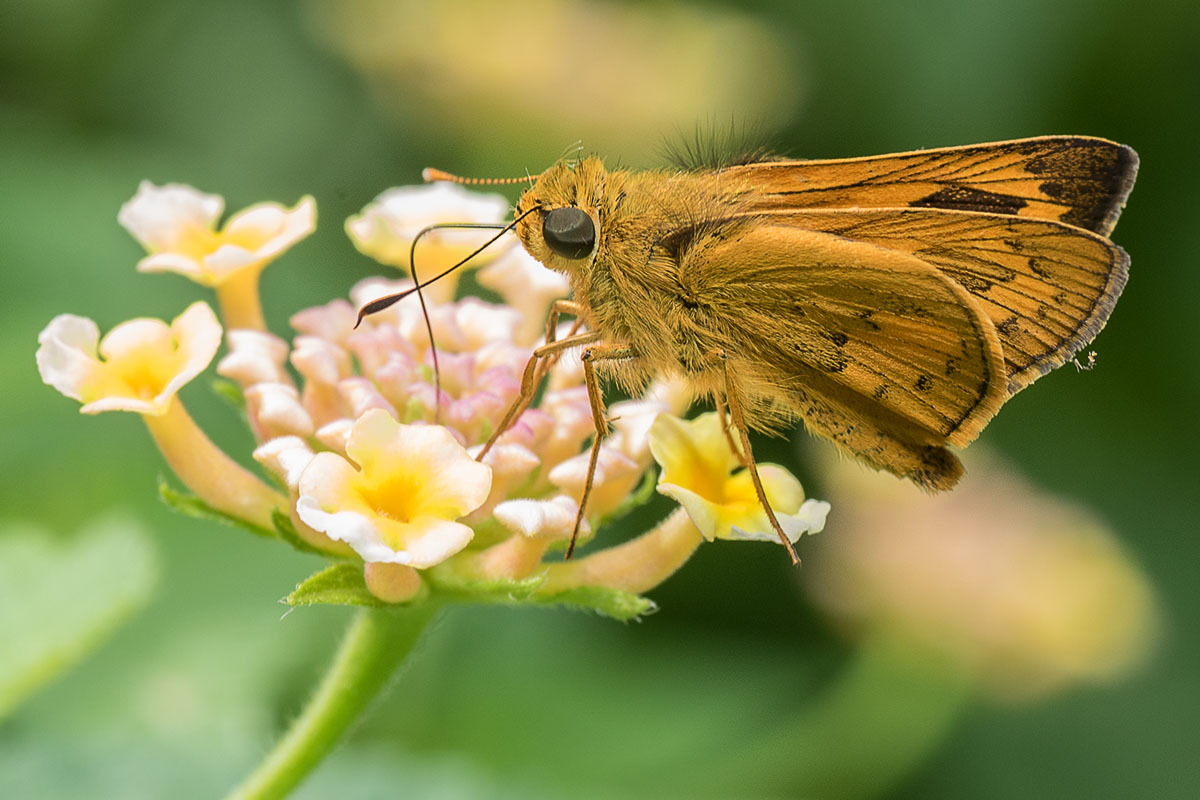


























The blue banded bee, or genus Amegilla, is a solitary bee that is indigenous to Australia and South (and South East) Asia. It's a common species in India that is often mistaken for a fly; a fast flier, it can hover in place and flits about between flowers like a little bolt of blue lightning.
Despite the name, the bands aren't always blue. Often, they're grey.
Proboscis Extension Reflex, or PER for short, is a reflex to antennal stimulation in bees. In other words, when bees "smell" nectar with their antennae, their tongues automatically extend. Blue banded bees hover around flowers with their tongues sticking out the whole time. It's quite Pavlovian.
I don't know if it's just me, but bees remind me of dogs. It's probably their furriness. For insects, they're awfully cuddly-looking animals.
Interesting fact: one can easily tell the gender of Amegilla is by counting its bands: 4 blue bands means female, 5 means it's a male.
Stingless bees comprise several genera and species (around 500), and the name is a bit of a misnomer: many species have stings, but they're so tiny that they can't penetrate anything. Most are 4-5 millimetres long.
Stingless bees are abundant in India. Their diminutiveness means that they're often mistaken for wasps or flies. I've seen them on practically every nectar-bearing flower in Mumbai.
So far I seem to have noticed more of these pretty little critters on flowers that are pollen-rich.
Stingless bees are often buzzing about tropical water lilies; their flowers are rich with pollen.
I couldn't stop thinking about Sarlacc after taking this series of shots. Pop culture aside, flowers such at the tropical water lily have co-evolved with bees. Flowers wouldn't exist without bees. The converse is also true.
Of all the Meliponines, genus Trigona (aka genus Tetragonula)is probably the most well-known. Meliponines are also tiny. Although there are a few species that are larger, most are about 4-5mm in length. They're hence a bit of a challenge to photograph, but their ubiquity makes the process a little easier.
Stingless bee, close-up. Probably trigona iridipennis. Stingless bees are also commonly called "Dammer Bees" in India.
I have no idea what bee this is. I'm not even sure that it is a bee- it could very well be a wasp. All I can tell you is that most solitary bees "sleep" in this fashion; they latch on to a plant stem with their mandibles and settle down for the night, becoming unresponsive till the next morning.
The Honey bee is of course what most people think of when the word "bee" is uttered. There are only 7 species worldwide, with 44 subspecies and several hybrids. While one might imagine overhanging honeycombs on tree limbs when thinking of hives, honey bees very often nest within tree trunks, like this hive of Apis cerana.
Bees are 'hairier' than most other insects because it allows them to carry pollen back to their hives, where it is fed to their grubs. Adult bees, on the other hand, only feed on nectar. Honey bees have a special "honey stomach", where nectar is stored, and then subsequently regurgitated along with their saliva. It is this mixture that forms honey.
The majority of bees within a hive are female. Male bees, called drones, do not forage or contribute to the hive. Their primary role is to mate with a queen bee (this happens in-fight), after which the male promptly drops dead. Drones within a hive are eventually ejected by worker bees during severe winters, since they don't collect pollen or nectar.
A honeybee hive is kept at a temperature between 32 and 35 degrees Celsius. If it starts getting hot, honey bees will fan cool air into it by rapidly fluttering their wings. When the hive gets too cold, 'heater bees can actually detach their flight muscles from their wings and buzz-heat the hive.
Other than bees, butterflies are also important pollinators. They're not quite as efficient at pollination as bees, though. Moreover, caterpillars can really chow down on leaves, damaging some plants in the process.
Flies are yet another example of pollinating insects. Again, they aren't as good as bees at pollination, but contribute to pollination nevertheless. Blue bottles are a common blow fly in Asia, genus Calliphora.
Animals of this size seem like little aliens when magnified.
Apis dorsata is the largest species of honeybee. They're called 'rock bees' because they've been observed playing electric guitar.
Haha, just kidding. A. dorsata often create hives on rocky cliffs and outcrops, hence the name.
The giant honeybee's demeanour isn't exactly conducive to apiculture; they're reportedly more aggressive around their hives than their other honeybee cousins. Even so, people still risk life and limb for their honey in India, often scaling dangerous heights and rocky outcrops to do so.
Genus ceratina is closely related to the more familiar (and bigger) carpenter bee species. There are more than 200 species within this genus. Some are dark, while others like this one are a brilliant iridescent green.
This particular species is abundant in Mahim Nature Park, Mumbai, which is where it was photographed.
